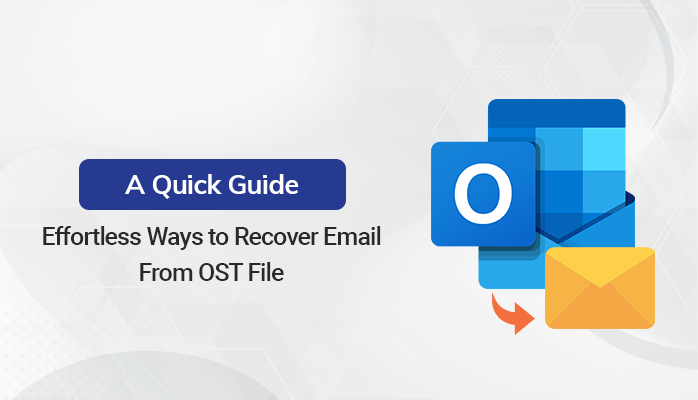Occasionally, you may accidentally delete essential emails from an OST file and need to retrieve those emails from the “Deleted Items” folder. But, if you deleted emails are also deleted from the “Deleted Items” folder? Or, did you accidentally delete the folder? There is a need to recover corrupt OST file. Now let’s see some techniques to recover email from OST files.
In this blog, we will discuss the best techniques to restore emails from Outlook OST files. There are some manual ways and automated solutions will be discussed here. Also, we will talk about a reliable utility named Sysinfo OST Recovery Tool. So let’s start the blog by discussing the OST file format.
What is OST File?
OST files are the Offline data files in MS Outlook. This file format is used to store a synchronized copy of your mailbox information on your local computer. Furthermore, It saves the data of Outlook such as messages, contacts, calendars, etc. Now let’s discuss the method how to recover emails From Outlook OST File
How to Recover Emails From Outlook OST File
We will cover several techniques in this part to restore a mailbox from OST files. This solution will take multiple scenarios in which a user needs to recover a mailbox from an OST file.
Scenario 1: MS Exchange Server Profile Not Changed
In this scenario, the user has to start the MS Exchange in offline mode using the Old Outlook OST file. Now the users can extract the emails from the OST file by exporting the mailbox from OST to PST format.
- First, the launch MS Exchange application in an Offline mode.
- Then, go to the File, click on Open and Export, and select the Import/Export option.
- Next, Import and Export Wizard will be open. Here, You have to click on Export to File and then choose Outlook data file (.pst)
- After that, Select the Outlook OST folders and click the Next button.
- Now, choose the OST folders containing essential Exchange information and click on the Next button.
- Lastly, click on the Browse button to select the desired location to store the recovered OST mailbox data files, and click on the Finish button.
Mailbox data will be transferred into a newly created PST file. All the messages will be moved into a freshly created PST. Now the emails from PST can be imported back to the server-based mailbox.
Scenario 2: Modified, lost, or deleted MS Exchange profile
If the Exchange Server mailbox is accidentally deleted or the MS Exchange profile is modified, the Microsoft Outlook OST file becomes an orphan. In this case, the orphaned Outlook OST file is of no use as it can’t be synced to extract information from it. MS Exchange Server and Outlook OST can only be synchronized using the unique MAPI address.
- First of all, link the Outlook application with the original MAPI.
- Then, you must link up the MAPI address to the original MS Exchange Server.
The original MAPI address is extremely unlikely if the user is dealing with old OST files or corruption of Microsoft Exchange. Furthermore, you can’t use an OST file that is damaged or corrupt.
Scenario 3: Exchange Mailbox Accidentally Deleted
It gets worse when the user accidentally deletes the Exchange mailbox without taking a backup. In this scenario, the user can use an automated approach, such as Sysinfo OST Recovery Tool Tool to recover and restore deleted emails from Outlook OST File. Through the software, users can easily and quickly access email items from an orphaned/inaccessible OST file, by converting it to a PST file. Additionally, it helps restore deleted emails from an Offline Outlook Data File (.ost).
Conclusion
Here we will sum up the whole blog, firstly we have talked about the OST files. Then we discussed the methods including manual and automated methods. All the methods are good to perform but some novice users may face issues while performing the manual approaches. So for those users, I want to recommend using the automated method.











